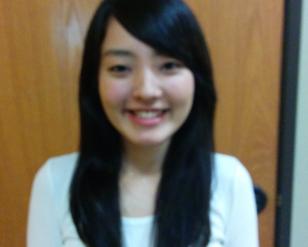What did you do for Spring Break? Did you relax, go to the beach, spend time with family? I spent my spring break collecting garbage, planting trees, gardening, and building relationships with other SSU students who care about sustainability.
When I met my supervisor for the first time, she also introduced Sonoma State Alternative Spring Breaks. Sonoma State Alternative Breaks are week-long trips that focus on specific social issues, and students bring what we learn back to our own campus and community. This year SSU Alternative Spring Breaks went on five trips focussing on: Native American Culture, Hunger and Homelessness, Food Justice, Gender Issues, and Sustainability.
The SSU Alternative Break team is committed not to just one week a year, but 52 weeks, and not just one day, but 365 days. - SSU Alternative Breaks Homepage
I chose the Sustainability trip because California is a different environment from home, and I was wondering how people live in harmony with nature. I have also wanted to know about energy resources since I joined a volunteer trip of 2011 Tōhoku earthquake and tsunami in Japan, and have worried about nuclear energy. I thought Alternative Spring Breaks seemed the best opportunity to learn how to maintain the environment and build a good relationship between humans and nature.
In preparation for the trip I attended meetings every Friday throughout the semester. The participants have discussions not only in each trip group, but also in mixed trip groups. Honestly, at first I felt the meetings were too long. But, I realized these meetings are really important for the participants to remind us of the purpose of the trips. The participants had some activities in the meetings, and through the meetings we were making great friendships.
My sustainability group did some volunteer service and projects during the trip. I always woke up around 7, and left the church that the group was staying at around 8. We had a few projects a day. We usually cooked every meal for ourselves. And then, our group had a meeting and activities every night. At the meetings, we reflected the projects, and discussed what we learned from them on the day.
One of the best projects for me was when my group went to Arcata Community Forest. The forest was so beautiful, and many people come to there to hike. But, unfortunately, there was some trash in the forest, so we picked it up. Because there were some hard slopes, I lost my energy very quickly. I was nervous because it was the very first service project and I thought I would be exhausted very quickly. After the group completed the cleaning, I really enjoyed planting a few trees. I was surprised that the baby trees were so strong, so I was holding the tops of the trees when I was carrying them. I was also surprised that trees need so much time to grow up. The tree that I planted will become an adult tree after my generation has passed away.
In addition, I was glad to work in Patrick Point State Park. Our project was pulling out English ivy because it chokes the growth of the trees. I was surprised because I thought the ivy looked beautiful, but it disturbed the trees' lives. In the park, there was a lot of ivy, and it was hard for me to get it out. Sometimes my trip members climbed the trees to get at the ivy. And most of us got extremely dirty. But, I was not too tired to do this project because I had my friends and working with friends together made it fun. A lot of energy was necessary for this project because the English ivy is so strong, it took a lot of people-power to remove it.
I really liked helping the SSU Food Justice group with gardening at Slide Ranch. We went there on the last day of the trip, and I was so impressed because Slide Ranch was an amazing place for everyone. There were so many animals, including goats, sheep, and chickens. Also, many children were there, and they were playing with the animals. As a project, I made a small river for plants. I was surprised because I was so focussed on making this river and I almost forget to eat lunch. I felt like I was like a child, and I was surprised at myself because I worked more than ever.
I had other activities during the trip. One of my memories is of going to Samoa Dunes Beach. After dinner, my group and I went there and saw the sunset at the beach. It was so amazing and we were so excited to play there even though we were so tired from our service. At the time, I realized my trip members were working hard together and had built very strong friendships even though it had only been one week.
Also, my group worked together with students from the University of Utah. Because I did not know that other universities had Alternative Spring Breaks like Sonoma State, I was reminded Alternative Spring Breaks were amazing opportunities for students.
Through the Alternative Spring Break, I met some people who care about nature and sustainable life, and they inspired me because what they were doing seemed like many other people could do. They showed me the importance of small actions, and I think we could make our world much better if more people do these types of actions. Not only this, but also I was motivated by my trip members. They and I had a meeting and activity every night, and reflected on our projects. I thought the reflections were really important because we could notice what we did together. I also thought that having discussions with them was important to help us to keep our relationships strong. I really appreciated my amazing trip members and all the people who participated in the Alternative Spring Breaks.









